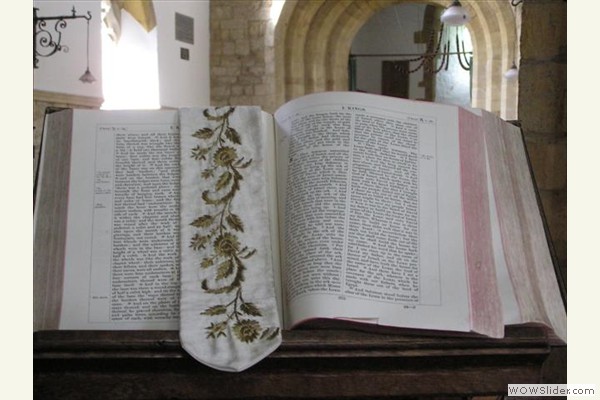
HAYDOCK CATHOLIC BIBLE COMMENTARY ON THE OLD TESTAMENT
ZACHARIAS 5
CHAPTER V.
Ver. 1. Eyes of the soul. M. --- Volume. That is, a parchment, according to the form of the ancient books, which, from begin rolled up, were called volumes. Ch. --- Such are still used in the synagogues. They were usually written only on one side. C. --- Sept. have read e at the end of megilla, and render "a scythe," (H.) indicating chastisement. Aquila and Th. have Diphtherea, and Sym. Kephalis. S. Jer. --- The latter denotes the roller H. to which the parchment was sewed. M. --- The former signifies a book written on vellum, particularly that in which the poets say Jupiter marks the sins and punishments of mankind. The prophet saw a volume of this nature. C. --- The sins of the people, and the punishment designed for them, were described. It appeared flying, to shew that the decree came from heaven. S. Chrys. Il. xxvii. ad pop. W.
Ver. 2. Cubits, alluding to Judea, which was twice as long as it was broad. M. --- Many explain this vision and that of the woman, (v. 7) of the Jews, (C.) after S. Jerom. H. --- But is seems rather to denote the Chaldeans, whose sentence had been long pronounced, and who were punished by the Persians, and by the Greeks, as by two women. If we understand the Jews, their iniquity was chastised by the Assyrians and Chaldeans. C.
Ver. 3. In like. Prot. "shall cut off as on that side standing to it." H.
Ver. 4. Thief. Nabuchodonosor is often so styled. S. Jer. iv. 7. This title comprises all the injuries done to man, as he that sweareth falsely refers to those where God's honour is concerned (C.) more immediately. H.
Ver. 6. Vessel. Heb. epha. C. --- Eye. This is what they fix their eye upon, or this is a resemblance and figure of them, viz. of sinners. Ch. --- Prot. "resemblance." H. --- This is their picture. C. --- Sept. "wickedness;" aunom. H. --- U is often mistaken for i. S. Jer. Yet here the Sept. seems equally intelligible, v. 8. H.
Ver. 7. Talent, or weight, (H.) called a stone, v. 8. --- Vessel, like the idol Canopus.
Ver. 8. He cast. Heb. (C.) according to Theodot. (S. Jer.) "She cast herself into the epha," &c. H.
Ver. 9. Women. They often represent nations; and here the Jews understand the Medes and Greeks, who punished the Chaldees. S. Jerom rather thinks that the Assyrians and Chaldeans are meant, carrying away Israel and Juda. Yet the former supposition seems preferable, as the woman in the vessel signified the wickedness of Babylon. --- Kite. Moderns have, "stork:" the true sense is uncertain. C. --- The Jews became blind and hardened on account of their avarice and perjuries. W.
Ver. 11. the land of Sennaar, where Babel or Babylon was built; (Gen. ix.) where note that Babylon, in holy writ, is often taken for the city of the devil, (that is, for the whole congregation of the wicked) as Jerusalem is taken for the city and people of God. Ch. --- Antichrist will begin his reign at Babylon. W. --- Yet this is not clear. H. --- The Chaldeans are driven from the countries which they had seized, and confined to their own territory, by the Persians and Greeks; or, if we explain it of the Jews, many of them remained at Babylon, and did not return to defile their own country. Only those whose hearts were touched by God returned. 1 Esd. i. 5. C. --- Sennaar means "excussion." The Jews have been driven by the Chaldees and Romans into all parts. M.
Copyright ©1999-2023 Wildfire Fellowship, Inc all rights reserved

 Keep Site Running
Keep Site Running